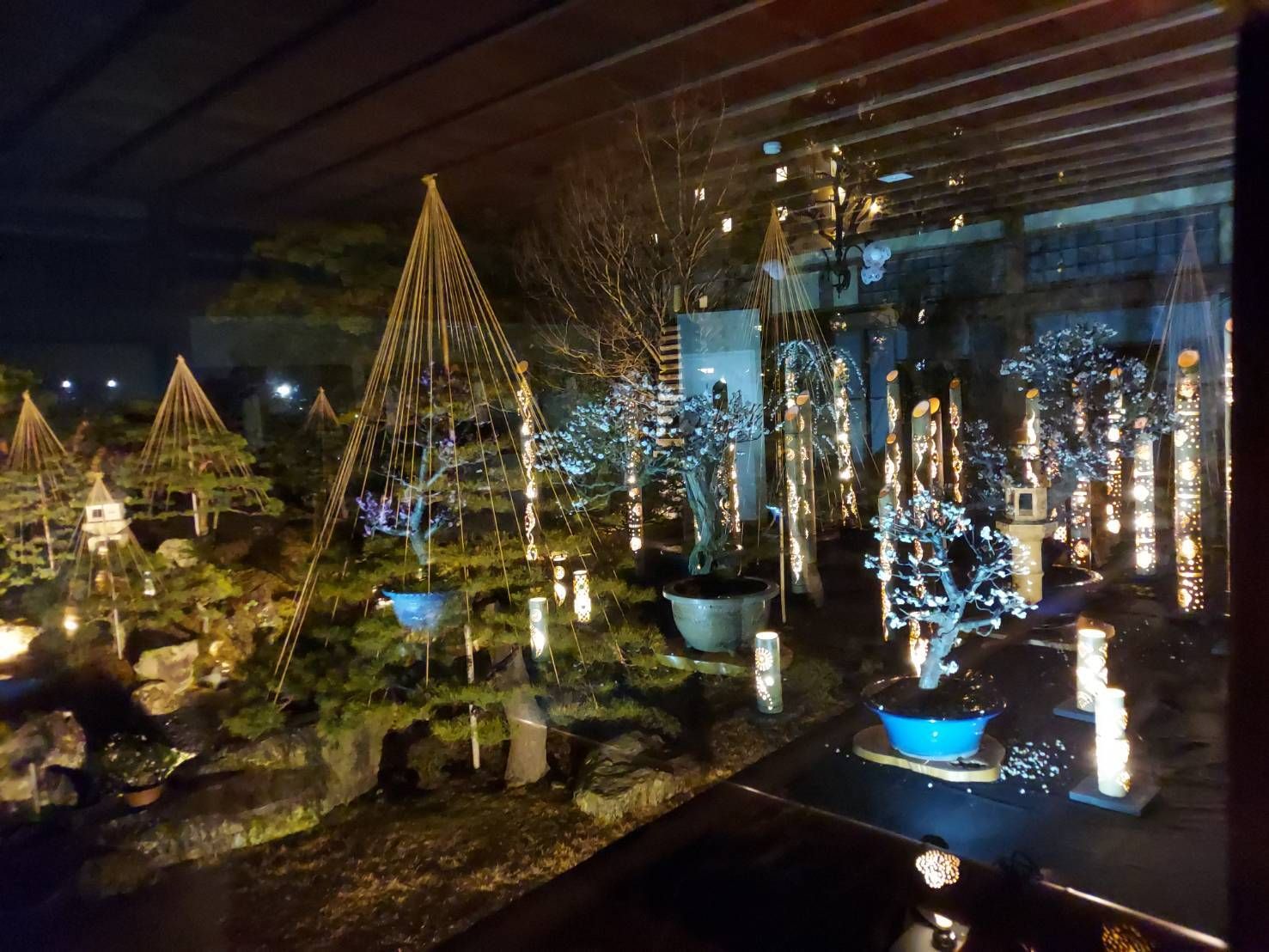Nagahama Plum Bonsai Exhibition Ticket
Overview
The Nagahama Plum Bonsai Exhibition, held between January and March, is the preeminent bonbai exhibition in Japan. It is unique in that the trees are owned and maintained by the city, not by private collectors. Out of the city’s impressive collection of some 2,000 plum trees, about 300 have been potted as bonsai. The exhibition’s bonsai are selected from these 300 potted trees based on the stage of their blossoms. About 90 plum bonsai can be exhibited at once, and bonsai that are nearing the end of their blossoming period are rotated out for newly blooming trees as the season progresses. Painstaking care is required to manage the trees year-round, a task overseen by two full-time bonsai artists. After viewing the plum blossoms, visitors are invited to stop by the tearoom on the second floor of Keiunkan’s new wing to relax with local traditional sweets and a cup of matcha or plum tea. A variety of delicacies from the Lake Biwa area, ranging from candy to fish, are sold at the souvenir
Highlights
- When you purchase with your Rakuten account, you can earn and use Rakuten points!
Key Information
Description
The Nagahama Plum Bonsai Exhibition, held between January and March, is the preeminent bonbai exhibition in Japan. It is unique in that the trees are owned and maintained by the city, not by private collectors. Out of the city’s impressive collection of some 2,000 plum trees, about 300 have been potted as bonsai. The exhibition’s bonsai are selected from these 300 potted trees based on the stage of their blossoms. About 90 plum bonsai can be exhibited at once, and bonsai that are nearing the end of their blossoming period are rotated out for newly blooming trees as the season progresses. Painstaking care is required to manage the trees year-round, a task overseen by two full-time bonsai artists. After viewing the plum blossoms, visitors are invited to stop by the tearoom on the second floor of Keiunkan’s new wing to relax with local traditional sweets and a cup of matcha or plum tea. A variety of delicacies from the Lake Biwa area, ranging from candy to fish, are sold at the souvenir stand on the second floor, along with many other exhibition-themed items.
How it works
The Nagahama Plum Bonsai Exhibition, held between January and March, is the preeminent bonbai exhibition in Japan. It is unique in that the trees are owned and maintained by the city, not by private collectors. Out of the city’s impressive collection of some 2,000 plum trees, about 300 have been potted as bonsai. The exhibition’s bonsai are selected from these 300 potted trees based on the stage of their blossoms. About 90 plum bonsai can be exhibited at once, and bonsai that are nearing the end of their blossoming period are rotated out for newly blooming trees as the season progresses. On weekends and holidays from late January to late February, the Nagahama Plum Bonsai Exhibition extends its hours into the evening for a special nighttime light display. During this event, Keiunkan’s plum bonsai are lit up with dramatic accent lighting and bamboo lanterns that accentuate the silhouette of each tree. The meticulous lighting effects offer a different viewing experience from that during the day. Although usually closed during the period of the exhibition, the second floor of Keiunkan, where the emperor and empress rested during their 1887 visit, is accessible during the nighttime light event.



